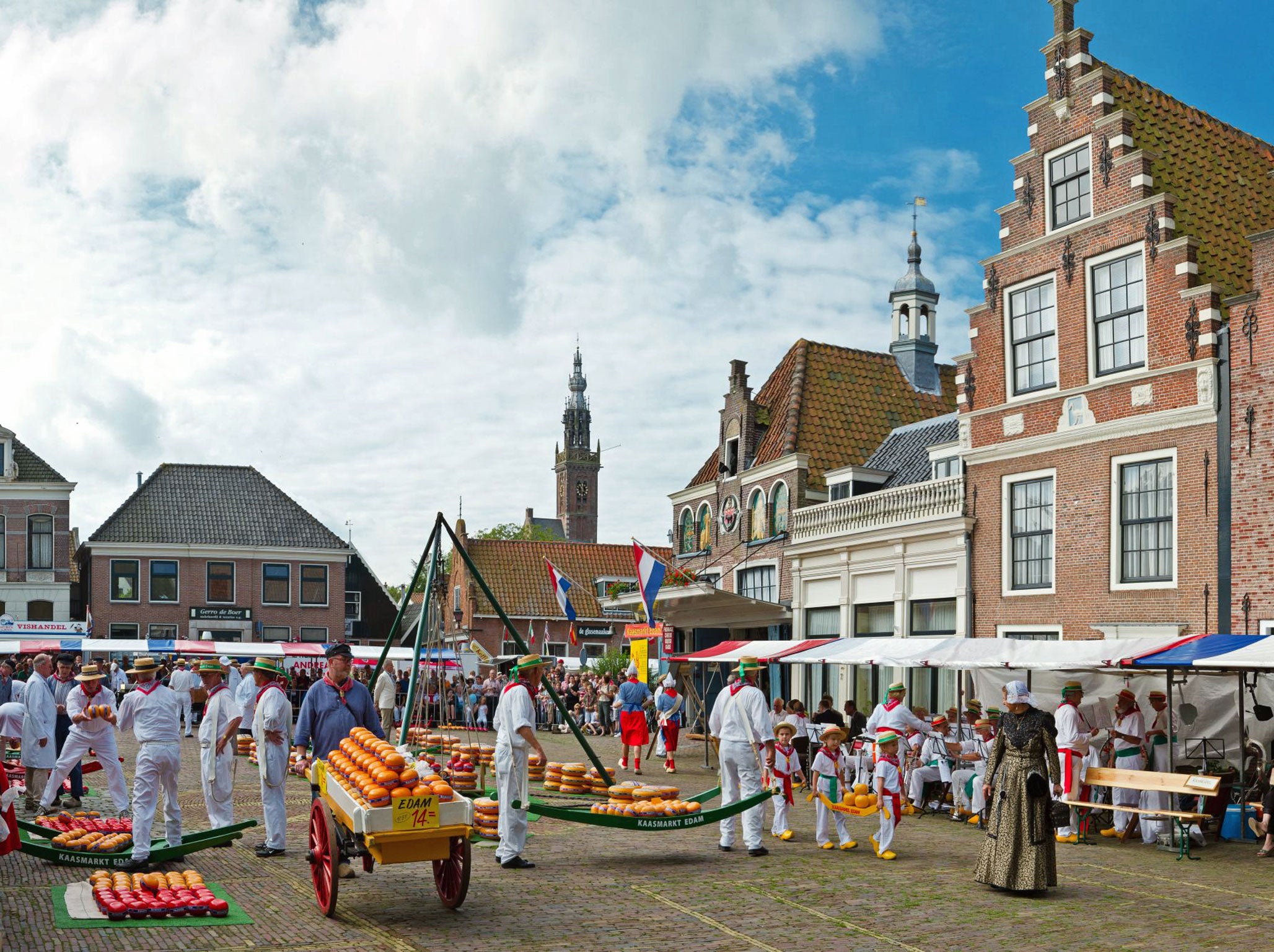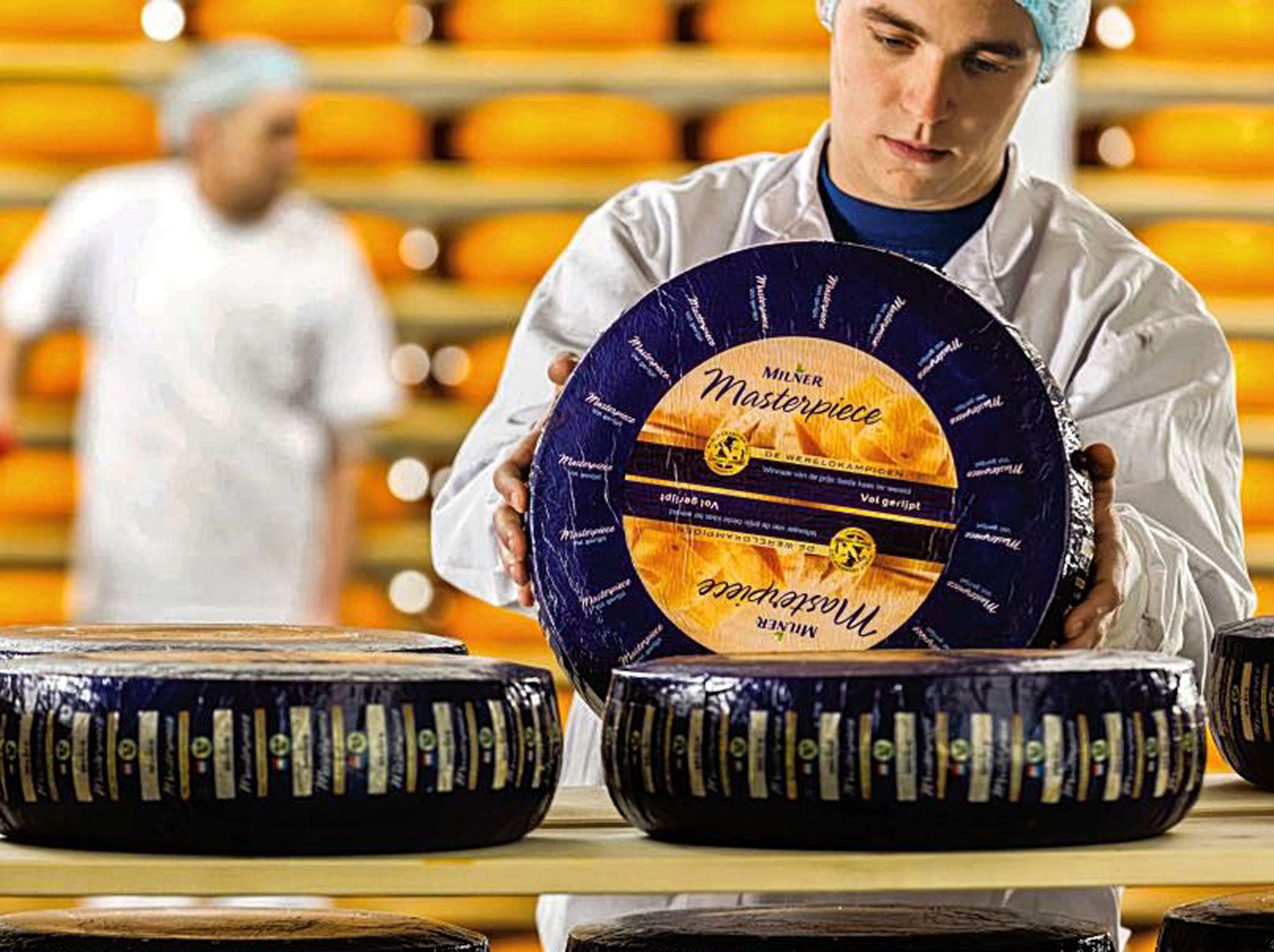The Independent's journalism is supported by our readers. When you purchase through links on our site, we may earn commission.
Follow the 'cheese trail' across the Netherlands
A dairy-based route highlights some of the country's most picturesque towns and villages – and its most delicious produce

Think cheese. You probably think of artisan producers in France or the Alpine-pasture produce of Switzerland – but Holland? Yet Vermeer, a Gouda cheese produced by the company FrieslandCampina, took the top prize at the 2012 World Championship Cheese Contest in the US (although it was bumped off the top spot by a Swiss Emmental last month). So why don't we make more of a fuss about it?
"Sadly, much of our exported cheese is young and lacking in flavour," says leading Dutch cheese maker Henri Willig, himself a former winner of the contest for his Polder Gold goats' cheese. "Yet proper Dutch cheese has a unique flavour, given the soil, the grass the Fresian cows feed on, and the milk they produce. It is creamy with a hint of sourness."
There are currently some 150 cheesemakers along Holland's burgeoning cheese trail, ranging from big companies such as Willig and Cono to small-scale artisan producers. Much like travelling the Route des Grands Crus in French wine country, you can drop in and visit most cheese-producing farms. Larger producers offer tours and gift shops for cheesy souvenirs.

I've come to the rural heartland of North Holland, a region traditionally associated with dairy, sheep and flower farming, to follow the trail. During a self-drive weekend of bucolic villages, slow-paced life and a chance to consume my own body weight in cheese, I want to explore the rural traditions that are the cornerstone of cheese-making in Holland.
Driving north from Amsterdam, the countryside opens up to reveal a steam-ironed landscape of grazing pasture, demarcated by dykes and polders, land beneath sea level pumped dry of water by windmills. Monks invented the pumping technique and farmers developed it for agriculture from the 16th century. Colourful village festivals, based around the agricultural calendar, developed soon after and, by the time Vermeer painted The Milkmaid in 1658, many towns across northern Holland had their very own cheese markets.
My first stop is the city of Edam itself, home to a historic cheese-weighing hall. William of Orange first granted Edam the right to trade cheese in 1576, and the town still hosts a cheese market during the summer months, although these days it's more about show than trade. Cheese shops around town stock examples of the three traditional Dutch varieties of cheese, namely Edam, Gouda and cumin-spiced Leiden. Local restaurants also support the cheese-chomping mania (my dinner that night featured a Messenklever Edam and a Bergens Blonde, served with fig compote).
The next day, I head to Beemster, the oldest polder in northern Holland, dating from 1612. The reclaimed region, parcelled out in a rectangular grid and dotted with farms and merchants' stately mansions, is now a World Heritage Site. The Farming Museum highlights the importance of traditional technology in man's battle with the water to maintain the quality of the dairy-farming pasture, using dykes and windmills to control the water level.
The Holy Grail for the cheese cognoscenti, however, remains the town of Alkmaar, where Waagplein, the central square, has hosted Holland's most important cheese market for centuries. Alkmaar had a weighing house for cheese as early as 1365. On a single day in 1917, some 365,000kg of cheese was sold at Alkmaar. These days, the market survives only on Fridays between April and early September.
The members of the Cheese Carrier's Guild, dressed in starched white uniforms and sporting jaunty straw boaters with rival colour sashes, compete to showcase their cheese-lifting skills. Responsible for weighing and transporting the cheese, they run through the crowd with handcarts, drawing whoops from the crowd as they manhandle huge Edams.
Around the perimeter of the square, meanwhile, pairs of cheese traders bargain according to a complex ancient ritual. They exchange a series of singsong handclaps while negotiating the price, slapping each other's hands in turn during the trade, only stopping for a handshake once the final price has been agreed.
After the show, I explore the weighing hall, now a museum with displays tracing the history of cheese-making from medieval agriculture to 20th-century artefacts. Pride of place is given to ancient kaasschaaf: cheese slicers used to slice the cheese for sampling. No self-respecting cheese connoisseur around these parts would be seen using a knife to slice their cheese.
Ancient cheese warehouses still survive among the wood-panelled buildings, medieval courtyards and quiet canals. A series of bright, cheery posters encourage people to consider cow well-being at all times. "Allow them to roam free in the pasture," they proclaim.
Cheese shops on side streets off the main square ply the traditional styles of Dutch cheese, but also sell the new flavours currently in vogue among next-generation cheese consumers – pesto, stinging nettle and paprika.
"Personally, I prefer the creamier flavour of Dutch cheese to other European cheeses," says Helen de Gier, a sales assistant at the Notenbranderij shop, talking me through a counter heaving under the waxy skins of brightly coloured cheeses. "It's the combination of softness with sourness."
I come away with several varieties to take home, including an exotic black truffle cheese. Better still, after a tranquil weekend exploring rural Holland and sampling the new breed of artisan flavours, I've seen the light about the true taste of Dutch cheese. I'll never buy another plastic pack of supermarket Edam again.
Getting there
KLM (0871 222 7474; klm.com) flies to Amsterdam from 17 UK departure points, including Birmingham, Manchester, Heathrow, Bristol and Cardiff, with returns from £89.
Staying there
The Hotel de Boerenkamer group (hotel-boerenkamer.nl), an association of working farms across northern Holland, offers B&B accommodation. Hoeve Chapeau (00 31 299 397 058; hoevechapeau.nl), a family guesthouse adjacent to Willig’s cheese farm in Katwoude, has doubles from €75 B&B.
More information
Join our commenting forum
Join thought-provoking conversations, follow other Independent readers and see their replies
Comments
Bookmark popover
Removed from bookmarks